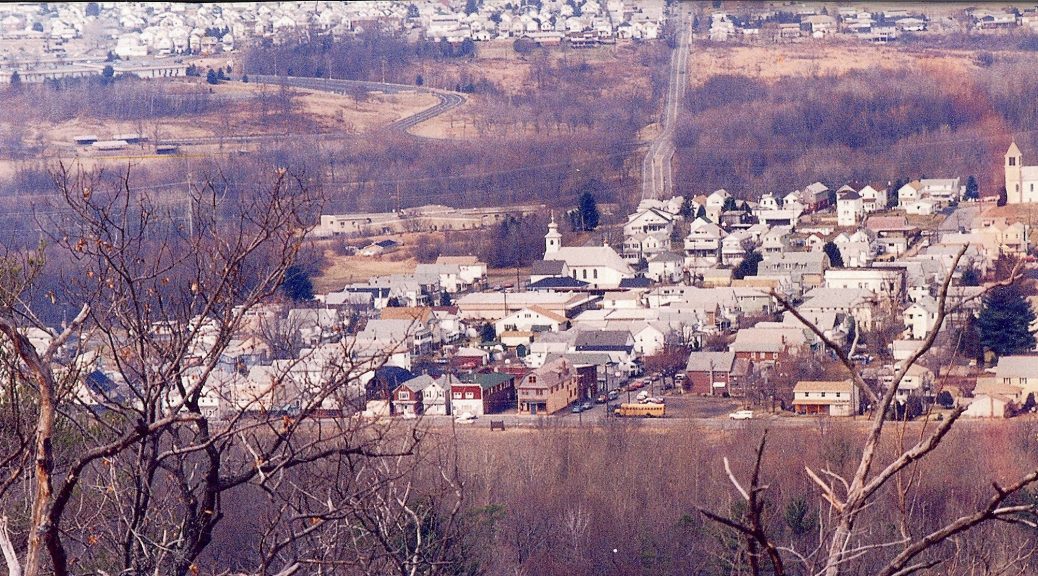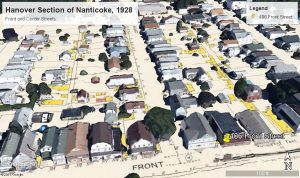This neighborhood, at one time called Rhone, is a distinct enclave, in northeastern Pennsylvania, set apart from the main town of Nanticoke, and consisting of only 11 streets. (Three more streets were actually added in the 1950s, but these will not be included in the analysis, since census data would not be available, and also because they are not part of the historical neighborhood.) The Hanover section was linked to Nanticoke proper and to Wilkes-Barre via streetcar lines. Nanticoke was home to anthracite coal mines and six colliers, the Truesdale colliery being located in the Hanover section.
I chose to focus on this community because I have family ties to the area and also because it is a small and distinct neighborhood that can be analyzed over time. It is often neglected in the histories of Nanticoke proper.
The project is based in census data from 1920 and 1940. I chose this material because it contains a lot of information about the people who lived in this small section of town, such as ethnicity and occupation, and can be compared over time. Also, the information is from the US government and not copyright protected. I had wanted to use the earliest census of the town, however, the town did not use house numbers until after 1910, so I was not able to go back as far as I would have liked. For the purposes of the class project, I have chosen to concentrate on two blocks of two cross streets, Front Street and Center Street.
I located a 1928 Sanborn map from the Penn State library that had the footprints for the buildings on these streets. I put this map into Mapwarper and I rectified it so that it was overlaid on a current map.
From this, I was able to geocode the addresses and upload the spreadsheet data into Carto. I uploaded the geocoded Sanborn map and I plotted the 1920 residents on the 2 blocks of Front and Center Streets:
Here is a map of the 1920 Census data plotted for Front and Center Streets:
More information was actually available in the 1940 census, as more questions were asked. Here is a map of the 1940 Census data plotted for Front and Center Streets:
One obvious difference is that Galicia and Lithuania no longer appears in the top birthplaces.
This neighborhood was quite self-sufficient with its own school, post office, shops etc. I wanted to bring this dimension out, so I was able to locate a business directory for the area from 1919 from the local historical society. I then made a separate map of the businesses in the Hanover section of Nanticoke.
Here are map with the 1919 businesses (hexagons) and 1920 residents (dots) merged:

